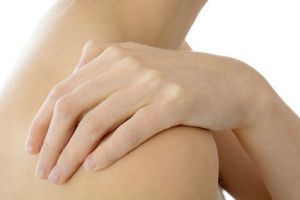
Trigger points are tiny knots that can develop in a muscle if it is injured or overstressed. It’s a common cause of joint paint that is also known to cause other problems such as headaches, neck or jaw pain, low back pain, tennis elbow and carpal tunnel syndrome.
Trigger point massage therapy can help alleviate the source of pain by providing cycles of isolated pressure and relief. While going to a professional massage therapist can help ease or even eliminate pain, self-massage may offer even more relief without the high cost.
Most types of pain can be relieved by using your own thumbs, or a simple tool like a tennis ball. Trigger points are usually fairly easy to find and it only takes a little massaging to get rid of the problem. Isolated trigger points are easier to manage, so if you’re experiencing issues in a more confined area there is a better chance that self-massage will take care of the issue.
You can rub your trigger points with your thumbs, fingertips, fist, or an object like a tennis ball. A tennis ball can be especially effective for getting to those hard-to-reach spots.
Follow these steps for relieving your trigger points on your own.
Locate your trigger points. This will help you know where to begin. Typically you can find it by moving your fingers along a muscle. When you find an especially tight spot that is tender to the touch it is a trigger point.
How to rub. Press on the trigger point directly, holding for 30 to 90 seconds, or apply small massage strokes in a back and forth motion. Stroke parallel to the muscle fibers if you are able to tell what direction they’re in; as if you’re trying to elongate them. If you can’t tell, don’t worry about it too much as rubbing the area is still likely to be effective. Use short strokes down the entire length of the muscle, covering it just once.
Amount of pressure. The right intensity is important in order for self-massage to be effective. Ideally, you should use enough pressure so that you feel mild discomfort in the muscle but not so much that you experience serious pain.
On a scale of one through ten, with one being painless and ten intolerable, aim for something within a range of four to seven, erring on the side of being more gentle, at least initially. If you experience a negative reaction, ease up on the pressure the next time you massage the area.
How long and how often should you massage? Massaging each suspected trigger point for approximately 30 seconds should be enough time, with a maximum duration of about five minutes.
 If it feels really good you can keep massaging it as long as you’d like. Provided you aren’t experiencing a negative reaction, aim for massaging your trigger points at least once a day and as often as six times each day.
If it feels really good you can keep massaging it as long as you’d like. Provided you aren’t experiencing a negative reaction, aim for massaging your trigger points at least once a day and as often as six times each day.
Self-massage can bring much-wanted relief to pain, but keep in mind that if you develop trigger points frequently that are unrelated to physical activity, you may need to practice stress reduction techniques in order to help your body relax.
-The Alternative Daily
Source:
http://saveyourself.ca/articles/self-massage.php

